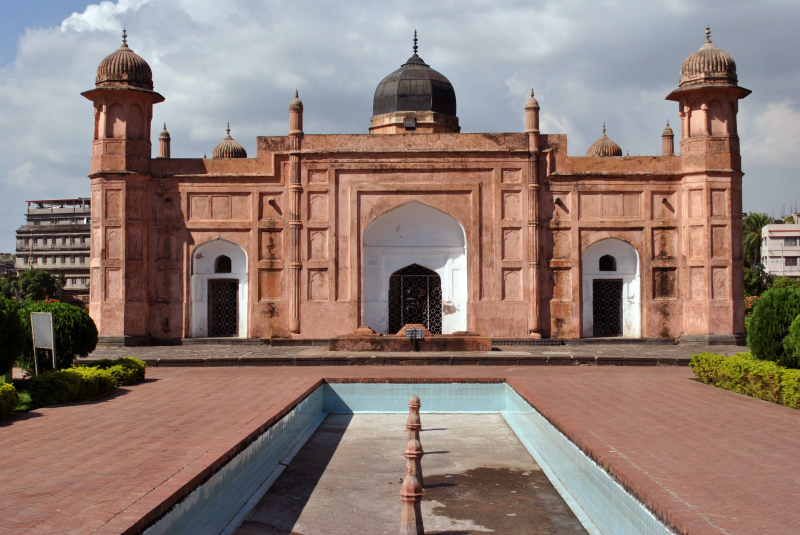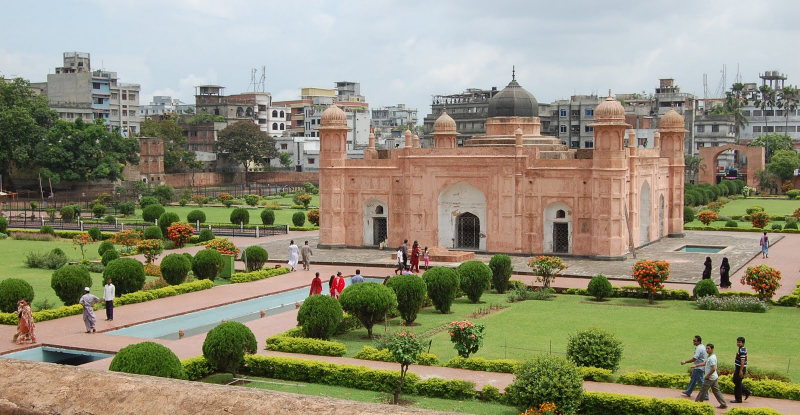Lalbagh Fort

Lalbagh Fort (also known as Fort Aurangabad) is an incomplete 17th-century Mughal fort complex located in the southwestern portion of Dhaka, Bangladesh, before the Buriganga River. Mughal Subahdar Muhammad Azam Shah, the son of Emperor Aurangzeb and subsequently emperor himself, began construction in 1678 AD. Shaista Khan, his successor, did not continue the work, although remaining in Dhaka until 1688.
For a long time, the fort was thought to consist of three buildings (the mosque, Bibi Pari's mausoleum, and the Diwan-i-Aam), two entrances, and a segment of the partly ruined fortification wall. Recent excavations by Bangladesh's Department of Archaeology have revealed the existence of more structures.
In the southwest corner of the southern fortification wall is a massive bastion. The utility buildings, stable, and administration block were located to the north of the southern defense wall, and its western section had a lovely roof-garden with fountains and a water reservoir. The residential section was positioned east of the west fortification wall, primarily to the southwest of the mosque.
The defensive wall on the south featured five two-story-high bastions at regular intervals, and the western wall had two bastions, the largest of which is near the main southern gate. There was a tunnel beneath the bastions. The core section of the fort is filled by three buildings: the Diwan-i-Aam and hammam on its east, the Mosque on its west, and the Tomb of Pari Bibi in between the two, but not at equal distance. From east to west and north to south, a water canal with fountains at regular intervals joins the three structures.
Google rating: 4.5/5.0
Address: Lalbagh Rd, Dhaka 1211, Bangladesh
Opening Hours:
- Tues - Sat (9am - 5pm)
- Fri (9am - 12:30pm, 2 - 5pm)
- Mon (1:30 - 5pm)
- Sunday is Closed











